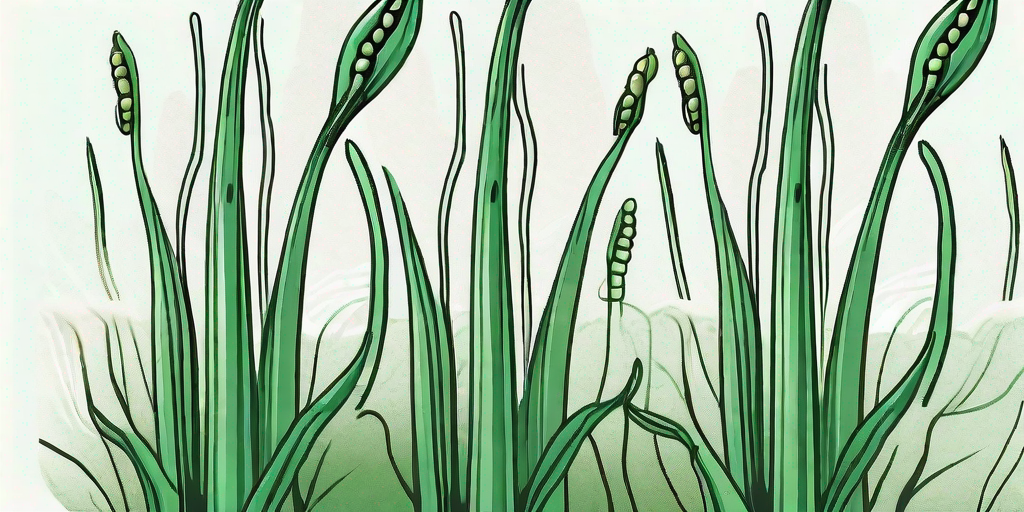
Ah, the long bean plant! A staple in many Asian cuisines and a delightful addition to any garden. But how does one go about growing these lanky legumes? Fear not, dear reader, for we have all the secrets to a bountiful harvest right here. So, grab your gardening gloves and let's dive in!
The Basics of Long Bean Plants
Before we get our hands dirty, let's get to know our green friends a bit better. Long bean plants, also known as yardlong beans, snake beans, or Chinese long beans, are a subtropical/tropical plant that loves the heat. They're part of the same family as your regular green beans, but they've clearly outgrown their cousins in the length department.
These beans are not only delicious, but they're also quite nutritious. Packed with vitamins A, C, and K, as well as minerals like magnesium, iron, and potassium, they're a great addition to any diet. But enough about their resume, let's get to the planting!
Planting Your Long Bean Plants
Choosing the Right Spot
Location, location, location! Long beans love the sun, so pick a spot in your garden that gets at least six hours of sunlight a day. They also prefer well-drained soil, so avoid areas where water tends to pool.
And remember, these beans are climbers. They'll need something to latch onto as they grow. A trellis, fence, or even some tall sticks will do the trick. Just make sure it's sturdy enough to support the weight of the beans.
Preparing the Soil
Long beans aren't too picky about their soil, but they do prefer it to be well-drained and rich in organic matter. So, before you plant, consider adding some compost or well-rotted manure to your soil. This will not only improve drainage but also provide your beans with the nutrients they need to grow.
Also, keep in mind that long beans prefer a slightly acidic to neutral pH. You can test your soil's pH with a simple kit from your local garden center. If your soil is too alkaline, adding some organic matter or sulfur can help lower the pH.
Planting and Caring for Your Long Bean Plants
Planting the Seeds
Once your soil is ready, it's time to plant! Long beans should be sown directly into the ground, as they don't transplant well. Plant the seeds about 1 inch deep and 3 inches apart. If you're using a trellis, plant the seeds about a foot apart along the base.
After planting, water the area well. You should start to see sprouts in about a week. Once the plants are about 6 inches tall, you can start training them to climb your trellis or other support structure.
Watering and Fertilizing
Long beans like their soil to be consistently moist, but not waterlogged. So, water your plants regularly, especially during dry spells. A layer of mulch around the base of the plants can help retain moisture.
As for fertilizing, a balanced fertilizer applied every 4-6 weeks should do the trick. Just be careful not to overdo it, as too much nitrogen can lead to lots of leaves but few beans.
Harvesting and Storing Your Long Beans
Now for the fun part: harvesting! Long beans are usually ready to harvest about 60 days after planting. You'll want to pick them when they're still young and tender, about 12-18 inches long. If you wait too long, they can become tough and stringy.
To store your beans, simply wash them, dry them thoroughly, and then store them in a plastic bag in the refrigerator. They should keep for about a week. You can also blanch and freeze them for longer storage.
Common Problems and Solutions
Like any plant, long beans can sometimes run into problems. But don't worry, we've got solutions!
Pests
Long beans can sometimes attract pests like aphids and spider mites. If you notice small, discolored spots on your leaves, you might have a pest problem. The good news is, these pests can usually be controlled with a blast of water from the hose or an application of insecticidal soap.
Diseases
Long beans can also be susceptible to diseases like powdery mildew and root rot. To prevent these, make sure your plants have good air circulation and avoid overwatering. If you do notice signs of disease, remove and dispose of the affected parts of the plant immediately.
Frequently Asked Questions
- Can I grow long beans in a container?
Yes, long beans can be grown in a container, as long as it's deep enough for the roots and has good drainage. Just make sure to provide a support structure for the beans to climb.
- When is the best time to plant long beans?
Long beans should be planted after the last frost in the spring, when the soil has warmed up. They love heat, so the warmer, the better!
- How often should I water my long beans?
Water your long beans regularly to keep the soil consistently moist. However, avoid overwatering, as this can lead to root rot.
And there you have it! With these tips and tricks, you'll be on your way to a bountiful harvest of long beans in no time. So, what are you waiting for? Get out there and start planting!











